
Tableau 2019.x Cookbook
¥90.46
Perform advanced dashboard, visualization, and analytical techniques with Tableau Desktop, Tableau Prep, and Tableau Server Key Features * Unique problem-solution approach to aid effective business decision-making * Create interactive dashboards and implement powerful business intelligence solutions * Includes best practices on using Tableau with modern cloud analytics services Book Description Tableau has been one of the most popular business intelligence solutions in recent times, thanks to its powerful and interactive data visualization capabilities. Tableau 2019.x Cookbook is full of useful recipes from industry experts, who will help you master Tableau skills and learn each aspect of Tableau's ecosystem. This book is enriched with features such as Tableau extracts, Tableau advanced calculations, geospatial analysis, and building dashboards. It will guide you with exciting data manipulation, storytelling, advanced filtering, expert visualization, and forecasting techniques using real-world examples. From basic functionalities of Tableau to complex deployment on Linux, you will cover it all. Moreover, you will learn advanced features of Tableau using R, Python, and various APIs. You will learn how to prepare data for analysis using the latest Tableau Prep. In the concluding chapters, you will learn how Tableau fits the modern world of analytics and works with modern data platforms such as Snowflake and Redshift. In addition, you will learn about the best practices of integrating Tableau with ETL using Matillion ETL. By the end of the book, you will be ready to tackle business intelligence challenges using Tableau's features. What you will learn * Understand the basic and advanced skills of Tableau Desktop * Implement best practices of visualization, dashboard, and storytelling * Learn advanced analytics with the use of build in statistics * Deploy the multi-node server on Linux and Windows * Use Tableau with big data sources such as Hadoop, Athena, and Spectrum * Cover Tableau built-in functions for forecasting using R packages * Combine, shape, and clean data for analysis using Tableau Prep * Extend Tableau’s functionalities with REST API and R/Python Who this book is for Tableau 2019.x Cookbook is for data analysts, data engineers, BI developers, and users who are looking for quick solutions to common and not-so-common problems faced while using Tableau products. Put each recipe into practice by bringing the latest offerings of Tableau 2019.x to solve real-world analytics and business intelligence challenges. Some understanding of BI concepts and Tableau is required.

Mastering Distributed Tracing
¥90.46
Understand how to apply distributed tracing to microservices-based architectures Key Features * A thorough conceptual introduction to distributed tracing * An exploration of the most important open standards in the space * A how-to guide for code instrumentation and operating a tracing infrastructure Book Description Mastering Distributed Tracing will equip you to operate and enhance your own tracing infrastructure. Through practical exercises and code examples, you will learn how end-to-end tracing can be used as a powerful application performance management and comprehension tool. The rise of Internet-scale companies, like Google and Amazon, ushered in a new era of distributed systems operating on thousands of nodes across multiple data centers. Microservices increased that complexity, often exponentially. It is harder to debug these systems, track down failures, detect bottlenecks, or even simply understand what is going on. Distributed tracing focuses on solving these problems for complex distributed systems. Today, tracing standards have developed and we have much faster systems, making instrumentation less intrusive and data more valuable. Yuri Shkuro, the creator of Jaeger, a popular open-source distributed tracing system, delivers end-to-end coverage of the field in Mastering Distributed Tracing. Review the history and theoretical foundations of tracing; solve the data gathering problem through code instrumentation, with open standards like OpenTracing, W3C Trace Context, and OpenCensus; and discuss the benefits and applications of a distributed tracing infrastructure for understanding, and profiling, complex systems. What you will learn * How to get started with using a distributed tracing system * How to get the most value out of end-to-end tracing * Learn about open standards in the space * Learn about code instrumentation and operating a tracing infrastructure * Learn where distributed tracing fits into microservices as a core function Who this book is for Any developer interested in testing large systems will find this book very revealing and in places, surprising. Every microservice architect and developer should have an insight into distributed tracing, and the book will help them on their way. System administrators with some development skills will also benefit. No particular programming language skills are required, although an ability to read Java, while non-essential, will help with the core chapters.
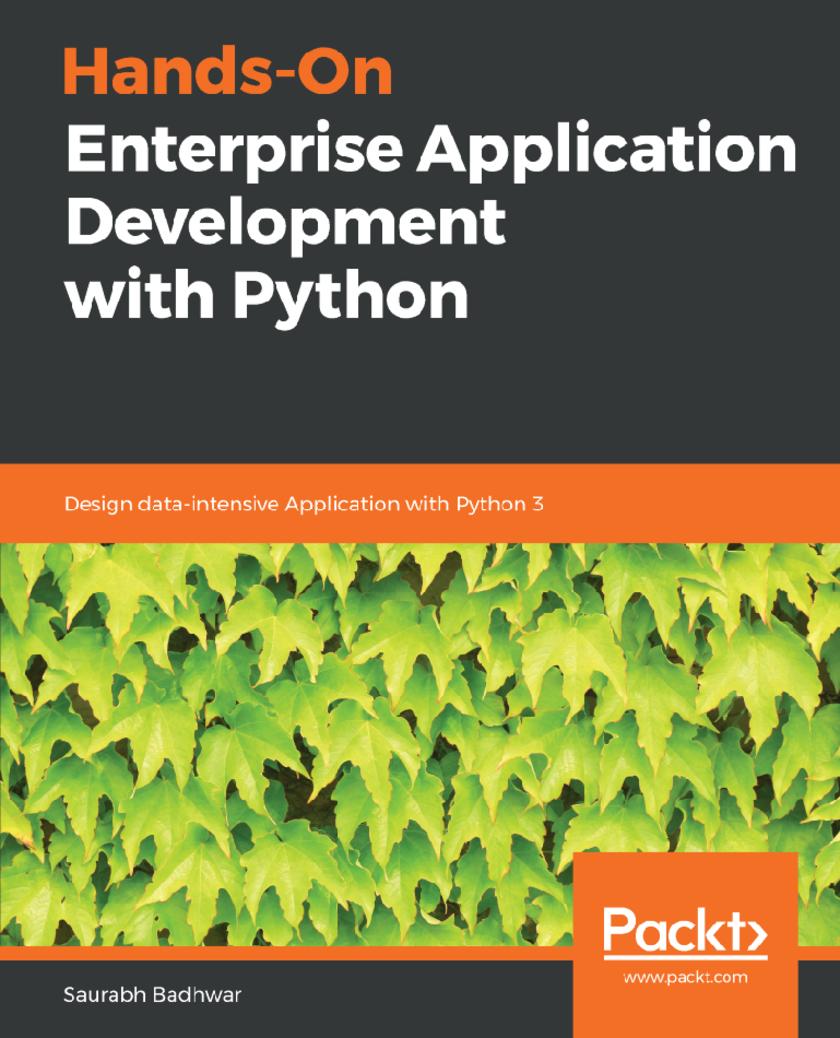
Hands-On Enterprise Application Development with Python
¥90.46
Architect scalable, reliable, and maintainable applications for enterprises with Python Key Features *Explore various Python design patterns used for enterprise software development *Apply best practices for testing and performance optimization to build stable applications *Learn about different attacking strategies used on enterprise applications and how to avoid them Book Description Dynamically typed languages like Python are continuously improving. With the addition of exciting new features and a wide selection of modern libraries and frameworks, Python has emerged as an ideal language for developing enterprise applications. Hands-On Enterprise Application Development with Python will show you how to build effective applications that are stable, secure, and easily scalable. The book is a detailed guide to building an end-to-end enterprise-grade application in Python. You will learn how to effectively implement Python features and design patterns that will positively impact your application lifecycle. The book also covers advanced concurrency techniques that will help you build a RESTful application with an optimized frontend. Given that security and stability are the foundation for an enterprise application, you’ll be trained on effective testing, performance analysis, and security practices, and understand how to embed them in your codebase during the initial phase. You’ll also be guided in how to move on from a monolithic architecture to one that is service oriented, leveraging microservices and serverless deployment techniques. By the end of the book, you will have become proficient at building efficient enterprise applications in Python. What you will learn *Understand the purpose of design patterns and their impact on application lifecycle *Build applications that can handle large amounts of data-intensive operations *Uncover advanced concurrency techniques and discover how to handle a large number of requests in production *Optimize frontends to improve the client-side experience of your application *Effective testing and performance profiling techniques to detect issues in applications early in the development cycle *Build applications with a focus on security *Implement large applications as microservices to improve scalability Who this book is for If you’re a developer who wants to build enterprise-grade applications, this book is for you. Basic to intermediate-level of programming experience with Python and database systems is required to understand the concepts covered in this book.
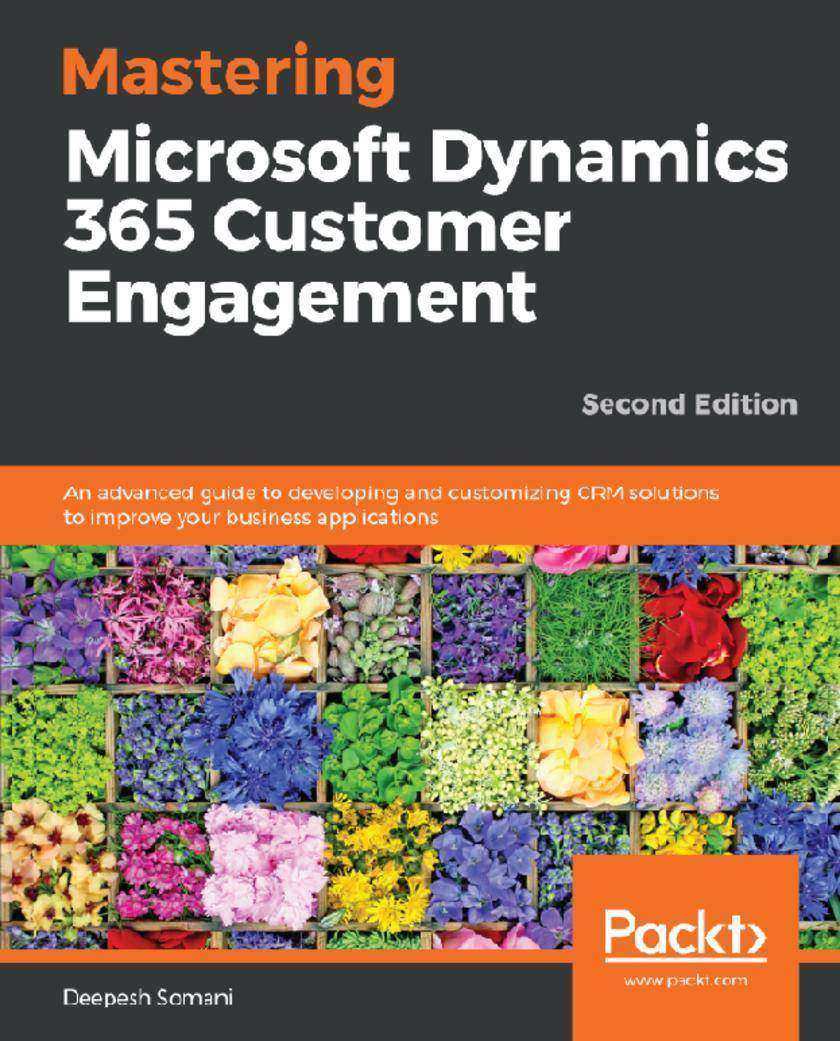
Mastering Microsoft Dynamics 365 Customer Engagement
¥90.46
A comprehensive guide packed with the latest features of Dynamics 365 for customer relationship management Key Features * Create efficient client-side apps and customized plugins that work seamlessly * Learn best practices from field experience to use Dynamics 365 efficiently * Unleash the power of Dynamics 365 to maximize your organization’s profits Book Description Microsoft Dynamics 365 is an all-in-one business management solution that's easy to use and adapt. It helps you connect your finances, sales, service, and operations to streamline business processes, improve customer interactions, and enable growth. This book gives you all the information you need to become an expert in MS Dynamics 365. This book starts with a brief overview of the functional features of Dynamics 365. You will learn how to create Word and Excel templates using CRM data to enable customized data analysis for your organization. This book helps you understand how to use Dynamics 365 as an XRM Framework, gain a deep understanding of client-side scripting in Dynamics 365, and create client-side applications using JavaScript and the Web API. In addition to this, you will discover how to customize Dynamics 365, and quickly move on to grasp the app structure, which helps you customize Dynamics 365 better. You will also learn how Dynamics 365 can be seamlessly embedded into various productivity tools to customize them for machine learning and contextual guidance. By the end of this book, you will have mastered utilizing Dynamics 365 features through real-world scenarios. What you will learn * Manage various divisions of your organization using Dynamics 365 customizations * Explore the XRM Framework and leverage its features * Provide an enhanced mobile and tablet experience * Develop client-side applications using JavaScript and the Web API * Understand how to develop plugins and workflows using Dynamics 365 * Explore solution framework improvements and new field types Who this book is for Mastering Microsoft Dynamics 365 Customer Engagement is for you if you have knowledge of Dynamics CRM and want to utilize the latest features of Dynamics 365. This book is also for you if you’re a skilled developer looking to move to the Microsoft stack to build business solution software. Extensive Dynamics CRM development experience will be beneficial to understand the concepts covered in this book.

Securing Network Infrastructure
¥90.46
Plug the gaps in your network’s infrastructure with resilient network security models Key Features * Develop a cost-effective and end-to-end vulnerability management program * Explore best practices for vulnerability scanning and risk assessment * Understand and implement network enumeration with Nessus and Network Mapper (Nmap) Book Description Digitization drives technology today, which is why it’s so important for organizations to design security mechanisms for their network infrastructures. Analyzing vulnerabilities is one of the best ways to secure your network infrastructure. This Learning Path begins by introducing you to the various concepts of network security assessment, workflows, and architectures. You will learn to employ open source tools to perform both active and passive network scanning and use these results to analyze and design a threat model for network security. With a firm understanding of the basics, you will then explore how to use Nessus and Nmap to scan your network for vulnerabilities and open ports and gain back door entry into a network. As you progress through the chapters, you will gain insights into how to carry out various key scanning tasks, including firewall detection, OS detection, and access management to detect vulnerabilities in your network. By the end of this Learning Path, you will be familiar with the tools you need for network scanning and techniques for vulnerability scanning and network protection. This Learning Path includes content from the following Packt books: * Network Scanning Cookbook by Sairam Jetty * Network Vulnerability Assessment by Sagar Rahalkar What you will learn * Explore various standards and frameworks for vulnerability assessments and penetration testing * Gain insight into vulnerability scoring and reporting * Discover the importance of patching and security hardening * Develop metrics to measure the success of a vulnerability management program * Perform configuration audits for various platforms using Nessus * Write custom Nessus and Nmap scripts on your own * Install and configure Nmap and Nessus in your network infrastructure * Perform host discovery to identify network devices Who this book is for This Learning Path is designed for security analysts, threat analysts, and security professionals responsible for developing a network threat model for an organization. Professionals who want to be part of a vulnerability management team and implement an end-to-end robust vulnerability management program will also find this Learning Path useful.

Implementing Azure: Putting Modern DevOps to Use
¥90.46
Explore powerful Azure DevOps solutions to develop and deploy your software faster and more efficiently. Key Features * Build modern microservice-based systems with Azure architecture * Learn to deploy and manage cloud services and virtual machines * Configure clusters with Azure Service Fabric for deployment Book Description This Learning Path helps you understand microservices architecture and leverage various services of Microsoft Azure Service Fabric to build, deploy, and maintain highly scalable enterprise-grade applications. You will learn to select an appropriate Azure backend structure for your solutions and work with its toolkit and managed apps to share your solutions with its service catalog. As you progress through the Learning Path, you will study Azure Cloud Services, Azure-managed Kubernetes, and Azure Container Services deployment techniques. To apply all that you’ve understood, you will build an end-to-end Azure system in scalable, decoupled tiers for an industrial bakery with three business domains. Toward the end of this Learning Path, you will build another scalable architecture using Azure Service Bus topics to send orders between decoupled business domains with scalable worker roles processing these orders. By the end of this Learning Path, you will be comfortable in using development, deployment, and maintenance processes to build robust cloud solutions on Azure. This Learning Path includes content from the following Packt products: * Learn Microsoft Azure by Mohamed Wali * Implementing Azure Solutions - Second Edition by Florian Klaffenbach, Oliver Michalski, Markus Klein * Microservices with Azure by Namit Tanasseri and Rahul Rai What you will learn * Study various Azure Service Fabric application programming models * Create and manage a Kubernetes cluster in Azure Kubernetes Service * Use site-to-site VPN and ExpressRoute connections in your environment * Design an Azure IoT app and learn to operate it in various scenarios * Implement a hybrid Azure design using Azure Stack * Build Azure SQL databases with Code First Migrations * Integrate client applications with Web API and SignalR on Azure * Implement the Azure Active Directory (Azure AD) across the entire system Who this book is for If you are an IT system architect, network admin, or a DevOps engineer who wants to implement Azure solutions for your organization, this Learning Path is for you. Basic knowledge of the Azure Cloud platform will be beneficial.

Implementing AWS: Design, Build, and Manage your Infrastructure
¥90.46
Work through exciting recipes to administer your AWS cloud Key Features * Build secure environments using AWS components and services * Explore core AWS features with real-world applications and best practices * Design and build Lambda functions using real-world examples Book Description With this Learning Path, you’ll explore techniques to easily manage applications on the AWS cloud. You’ll begin with an introduction to serverless computing, its advantages, and the fundamentals of AWS. The following chapters will guide you on how to manage multiple accounts by setting up consolidated billing, enhancing your application delivery skills, with the latest AWS services such as CodeCommit, CodeDeploy, and CodePipeline to provide continuous delivery and deployment, while also securing and monitoring your environment's workflow. It’ll also add to your understanding of the services AWS Lambda provides to developers. To refine your skills further, it demonstrates how to design, write, test, monitor, and troubleshoot Lambda functions. By the end of this Learning Path, you’ll be able to create a highly secure, fault-tolerant, and scalable environment for your applications. This Learning Path includes content from the following Packt products: * AWS Administration: The Definitive Guide, Second Edition by Yohan Wadia * AWS Administration Cookbook by Rowan Udell, Lucas Chan * Mastering AWS Lambda by Yohan Wadia, Udita Gupta What you will learn * Explore the benefits of serverless computing and applications * Deploy apps with AWS Elastic Beanstalk and Amazon Elastic File System * Secure environments with AWS CloudTrail, AWSConfig, and AWS Shield * Run big data analytics with Amazon EMR and Amazon Redshift * Back up and safeguard data using AWS Data Pipeline * Create monitoring and alerting dashboards using CloudWatch * Effectively monitor and troubleshoot serverless applications with AWS * Design serverless apps via AWS Lambda, DynamoDB, and API Gateway Who this book is for This Learning Path is specifically designed for IT system and network administrators, AWS architects, and DevOps engineers who want to effectively implement AWS in their organization and easily manage daily activities. Familiarity with Linux, web services, cloud computing platforms, virtualization, networking, and other administration-related tasks will assist in understanding the concepts in the book. Prior hands-on experience with AWS core services such as EC2, IAM, S3, and programming languages, such as Node.Js, Java, and C#, will also prove beneficial.

PostgreSQL Server Programming
¥90.46
This practical guide leads you through numerous aspects of working with PostgreSQL. Step by step examples allow you to easily set up and extend PostgreSQL. "PostgreSQL Server Programming" is for moderate to advanced PostgreSQL database professionals. To get the best understanding of this book, you should have general experience in writing SQL, a basic idea of query tuning, and some coding experience in a language of your choice.

Microsoft Dynamics CRM 2011 Reporting
¥90.46
The book is a focused and step-by-step tutorial on Microsoft Dynamics CRM Reporting capabilities. It will enable Dynamics developers to create and manage reports, know what tools to use, how to use them, and where to find the data based on how it’s being entered into the system with Dynamics CRM.This book is great for users and developers new to the Dynamics CRM Reports and SQL Server Reporting services, and who are looking to get a good grounding in how to use the reporting capabilities of Dynamics CRM 2011. It’s assumed that you will have some experience in HTML and JavaScript already to build the advanced reports, but no previous programming experience is required to build and learn how to create some basic to intermediate reports, which will be used during the exercises within this book.
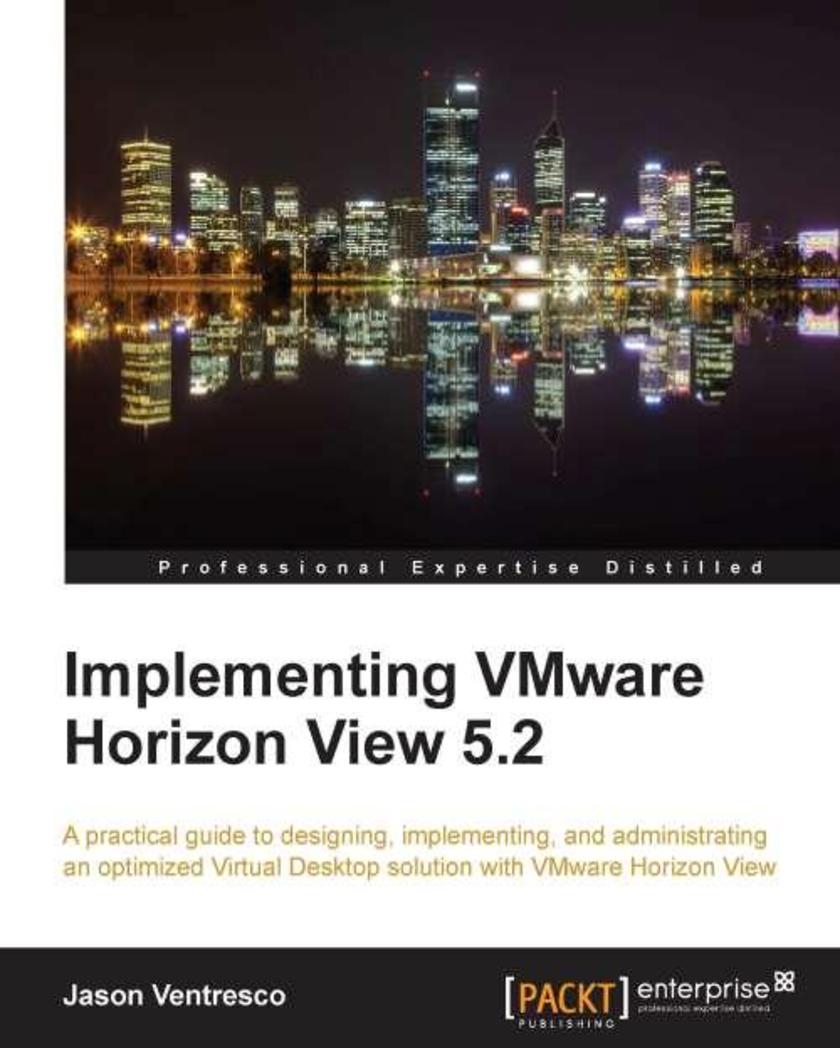
Implementing VMware Horizon View 5.2
¥90.46
A step-by-step tutorial covering all components of the View Horizon suite in detail, to ensure that you can utilize all features of the platform, and discover all of the possible ways that it can be used within your own environment.If you are a newcomer in system administration, and you wish to implement a small to midsized Horizon View environment, then this book is for you. It will also benefit individuals who wish to administrate and manage Horizon View more efficiently or are studying for the VCP5-DT.
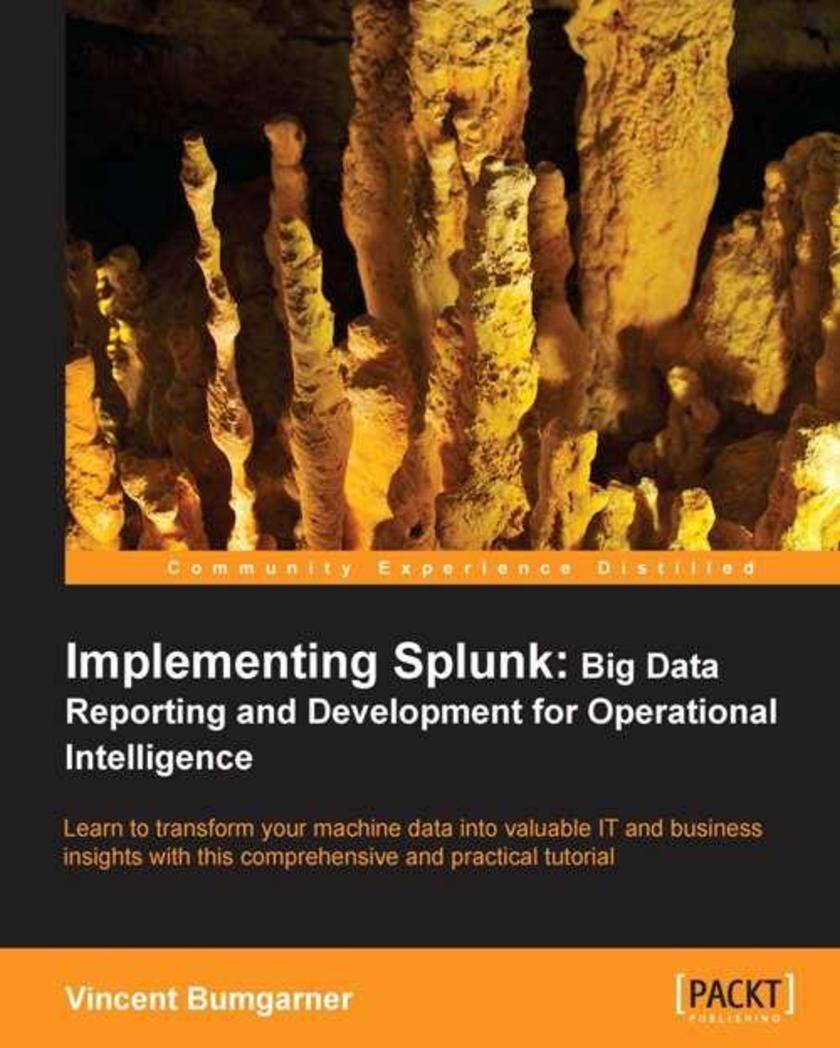
Implementing Splunk: Big Data Reporting and Development for Operational Intellig
¥90.46
A step-by-step practical implementation tutorial that equips you with high-level knowledge of configuring, deploying, extending, and integrating Splunk to bring machine-generated operational intelligence (?)to your advantage. The book targets professionals and organizations who want to implement or have already implemented Splunk for log analysis and indexing. Analysts and IT staff for end-to-end investigation, performance monitoring, and so on will also learn from the practical examples. It would even help managers to build reports and summarize the health, performance, and activity of their IT infrastructure and business. You will also find it helpful as a technical administrator, consultant, or end user. This book aims to be useful to Splunk users of all levels, from complete newbie to seasoned user. The book assumes that you have access to a copy of Splunk, ideally not in production. Many examples also assume your user has admin rights.
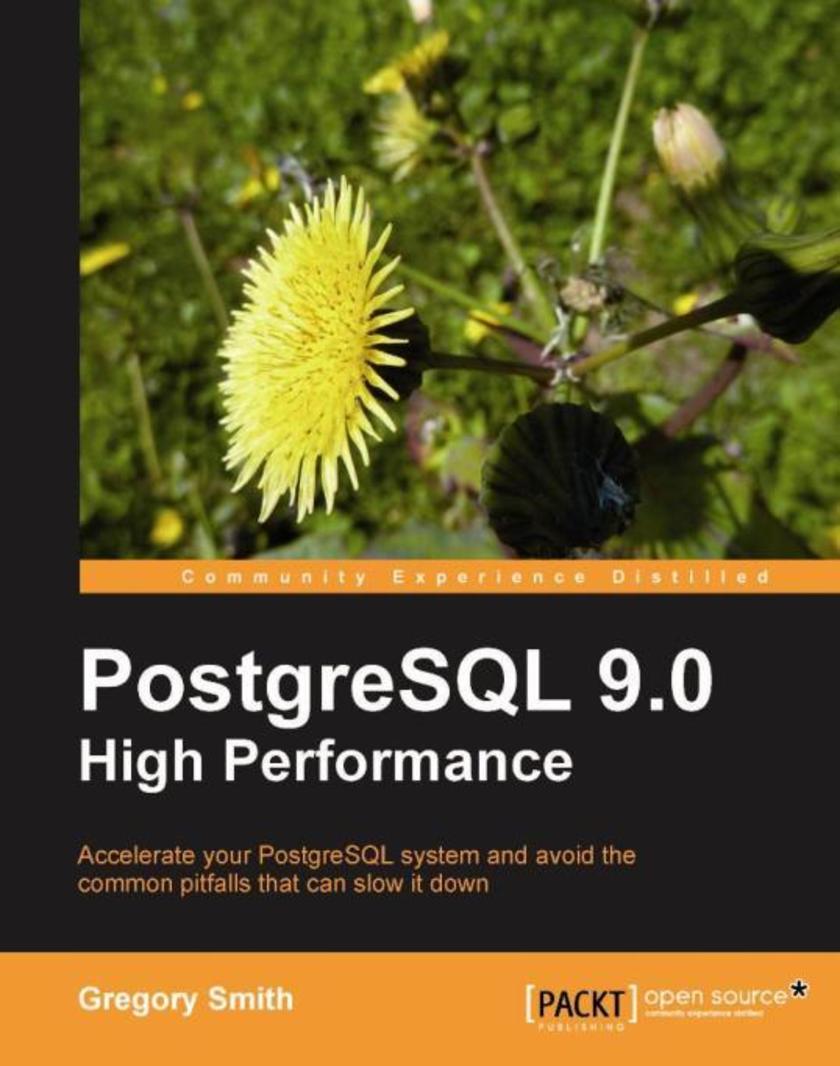
PostgreSQL 9.0 High Performance
¥90.46
Improving database performance requires an equal mix of understanding theoretical concepts and working through hands-on examples. You'll find both here. Many of the examples given will be immediately useful for monitoring and improving your PostgreSQL deployments, providing insight into hard-to-obtain information about your database. This book is aimed at intermediate to advanced database administrators using or planning to use PostgreSQL. Portions will also interest systems administrators looking to build or monitor a PostgreSQL installation, as well as developers interested in advanced database internals that impact application design.
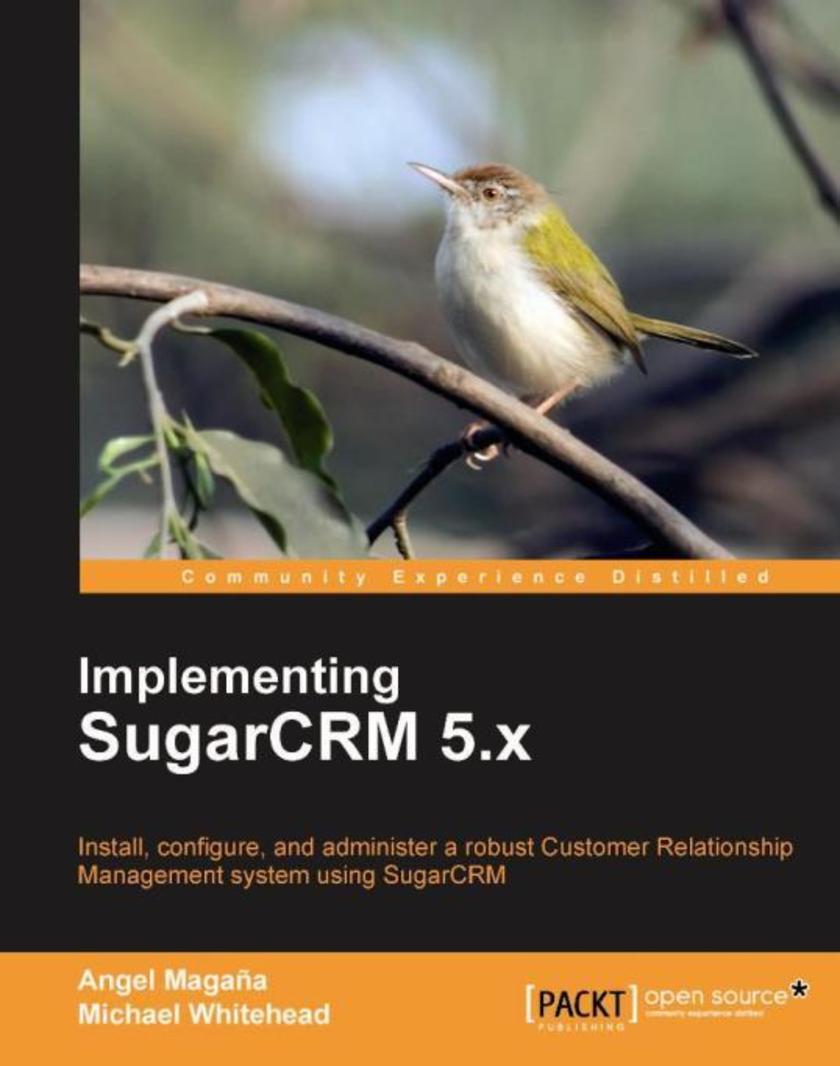
Implementing SugarCRM 5.x
¥90.46
The book works from the SugarCRM basics right up to advanced features in a clear and friendly way. It follows a combination of theoretical discussions relating to varying business needs and the manner in which CRM technology can address them. By helping you clarify your business goals the book enables you to build a CRM system to support your business needs. If you are a small-medium business owner/manager with reasonable IT skills, a system implementer, or a system administrator who wants to implement SugarCRM for yourself either as a first CRM or as a replacement for existing solutions, this book is for you. Existing SugarCRM users who want to broaden their understanding of the topic will find this book valuable too. No programming knowledge is required to use this book to implement, customize, and use SugarCRM.
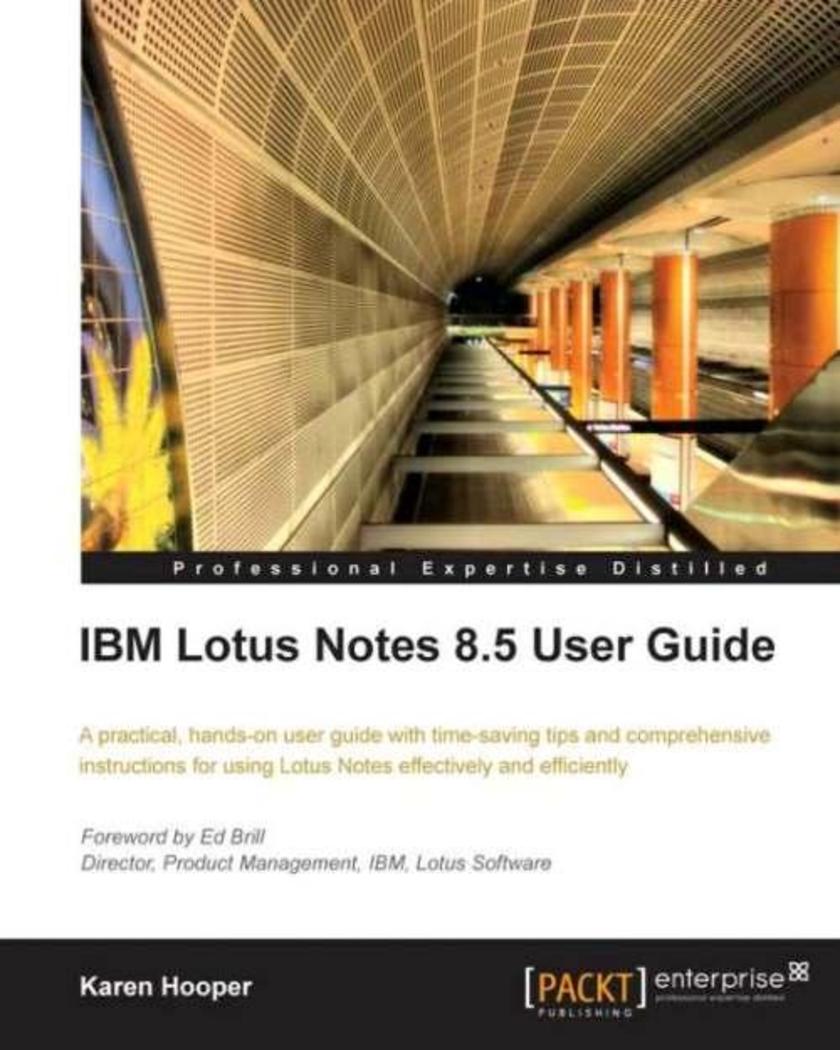
IBM Lotus Notes 8.5 User Guide
¥90.46
A compact Lotus Notes User Guide, this book covers best practices, hints, tips, and tricks of Lotus Notes 8.5. It draws on real-world examples and you will find this book to be an invaluable reference for Lotus Notes. There are significant changes from the earlier versions of Lotus Notes to the current version of 8.5 and this book covers the new features in detail so that you will be able to take advantage of them. However, this book also covers key features from earlier versions, which have stood the test of time. If you are a business user who wants to get the most out of Lotus Notes, then this book is for you. From beginners to seasoned professionals, this book aims to cover the features, best practices, tips, tricks, and tools that enable you to work smarter—almost effortlessly—in Lotus Notes 8.5.
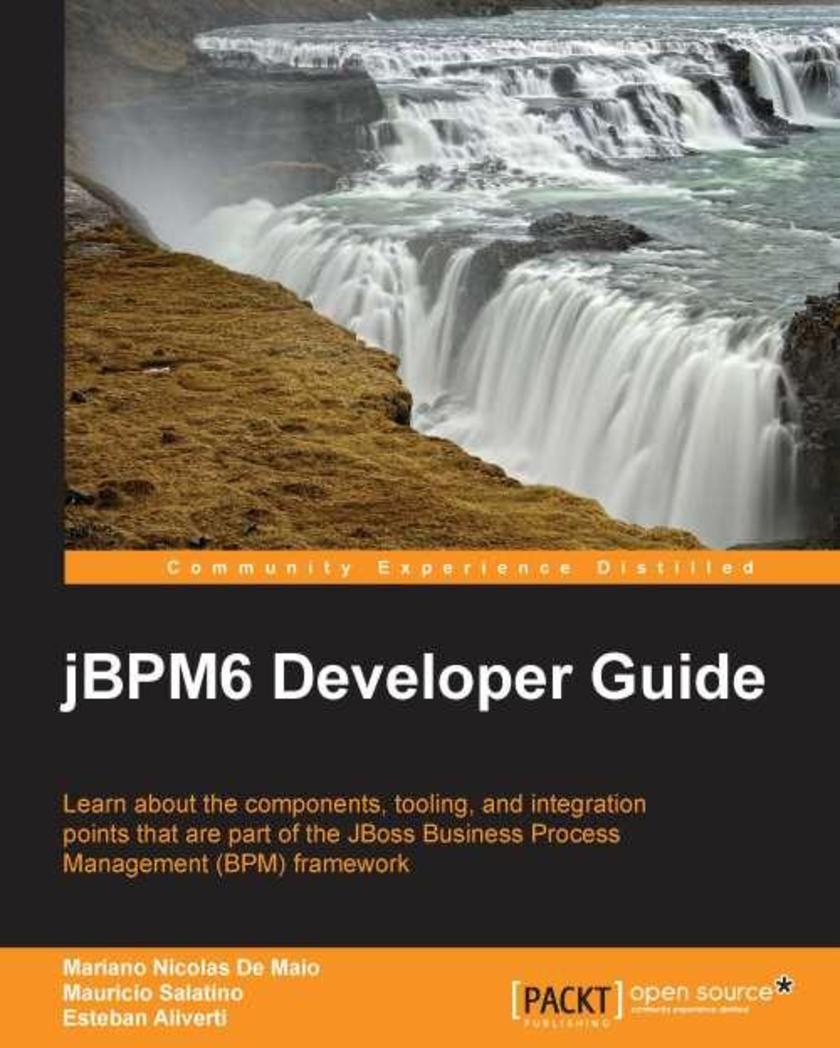
jBPM6 Developer Guide
¥90.46
If you are a Java developer or architect who needs to have a better understanding of how Business Process Management frameworks behave in real-life implementations, this book is for you. This book assumes that you know the Java language well and are familiar with some widely used frameworks such as Hibernate. You should also know the basics of relational databases and Maven-based applications.

AngularJS Web Application,Development Blueprints
¥90.46
If you are a web application developer interested in using AngularJS for a real-life project, then this book is for you. As a prerequisite, knowledge of JavaScript and HTML is expected, and a working knowledge of AngularJS is preferred.
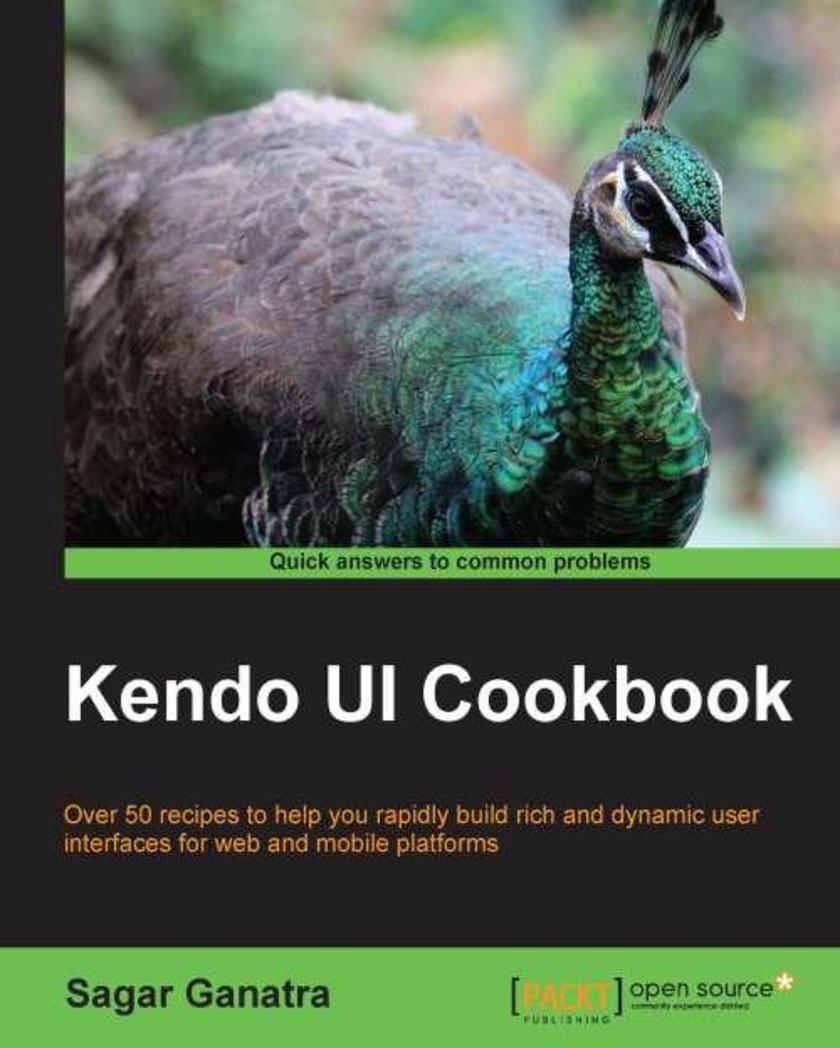
Kendo UI Cookbook
¥90.46
This book is an easy-to-follow guide full of hands-on examples that allows you to learn and build visually compelling web applications using the Kendo UI library. This book will do wonders for web developers having knowledge of HTML and Java* and want to polish their skills in building applications using the Kendo UI library.
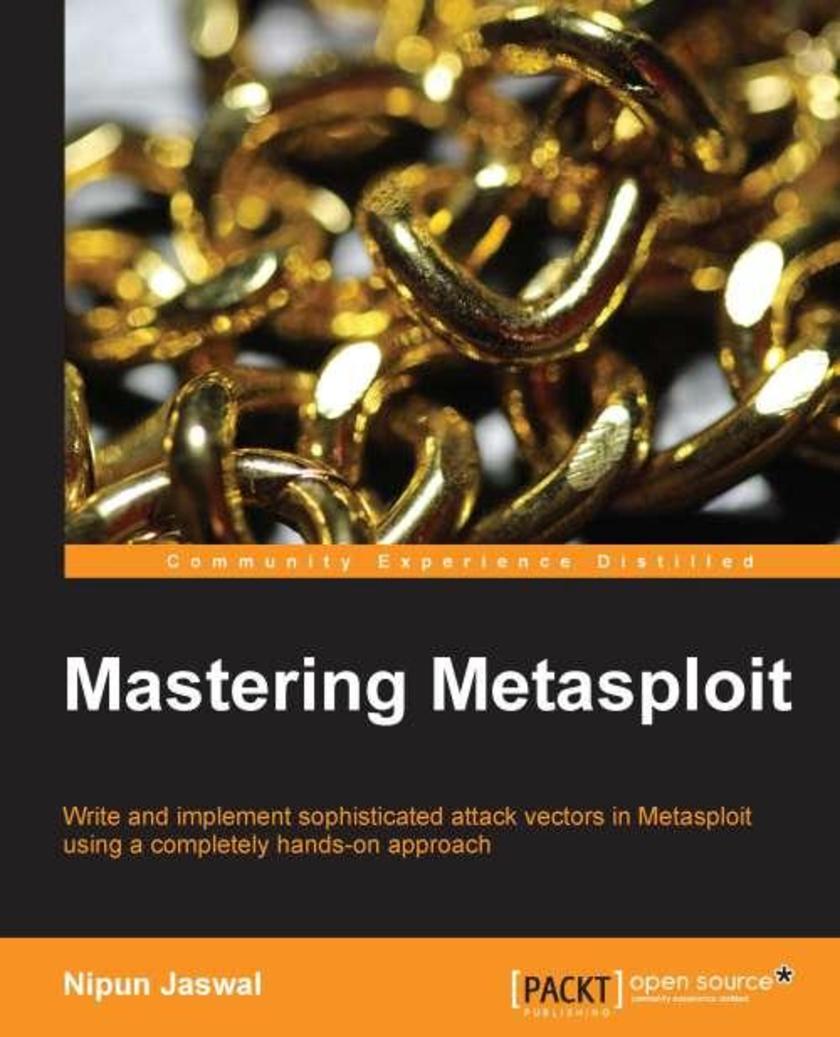
Mastering Metasploit
¥90.46
A comprehensive and detailed, step by step tutorial guide that takes you through important aspects of the Metasploit framework. If you are a penetration tester, security engineer, or someone who is looking to extend their penetration testing skills with Metasploit, then this book is ideal for you. The readers ofthis book must have a basic knowledge of using Metasploit. They are also expected to have knowledge of exploitation and an indepth understanding of object-oriented programming languages.
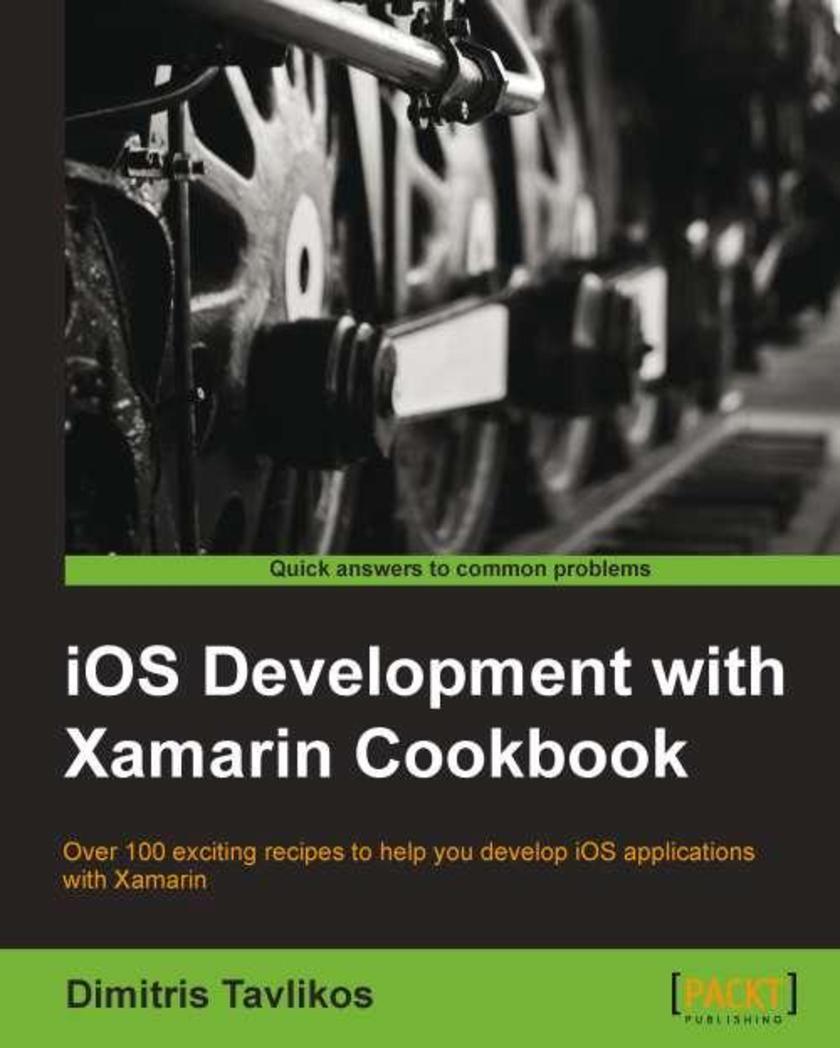
iOS Development with Xamarin Cookbook
¥90.46
The book is written in a recipe format with practical examples, allowing you to go directly to your topic of interest or follow topics throughout a chapter to gain an indepth knowledge. There are also plenty of hints and best practices along the way. If you are a C#/.NET developer with no previous experience in iOS development or an ObjectiveC developer who wants to create complete iOS applications and deploy them to the App Store, then this book is ideal for you. No experience with Xamarin is needed.
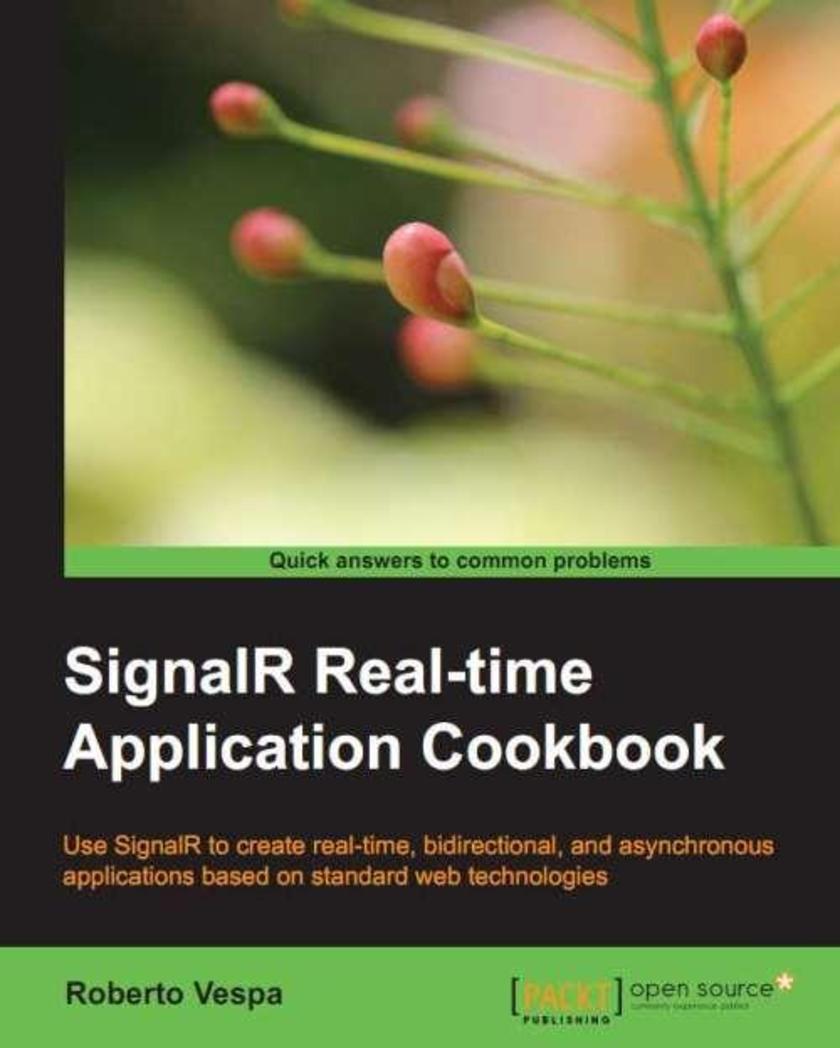
SignalR Real-time Application Cookbook
¥90.46
This book contains illustrated code examples to help you create realtime, asynchronous, and bidirectional clientserver applications. Each recipe will concentrate on one specific aspect of application development with SignalR showing you how that aspect can be used proficiently. Different levels of developers will find this book useful. Beginners will be able to learn all the fundamental concepts of SignalR, quickly becoming productive in a difficult arena. Experienced programmers will find in this book a handy and useful collection of readymade solutions to common use cases, which they will be able to enhance as needed. Developers can also use the book as a quick reference to the most important SignalR features. No previous practical experience either with SignalR or with realtime communication in general is required.

Web Penetration Testing with Kali Linux - Second Edition
¥90.46
Build your defense against web attacks with Kali Linux 2.0 About This Book Gain a deep understanding of the flaws in web applications and exploit them in a practical manner Get hands-on web application hacking experience with a range of tools in Kali Linux 2.0 Develop the practical skills required to master multiple tools in the Kali Linux 2.0 toolkit Who This Book Is For If you are already working as a network penetration tester and want to expand your knowledge of web application hacking, then this book tailored for you. Those who are interested in learning more about the Kali Sana tools that are used to test web applications will find this book a thoroughly useful and interesting guide. What You Will Learn Set up your lab with Kali Linux 2.0 Identify the difference between hacking a web application and network hacking Understand the different techniques used to identify the flavor of web applications Expose vulnerabilities present in web servers and their applications using server-side attacks Use SQL and cross-site *ing (XSS) attacks Check for XSS flaws using the burp suite proxy Find out about the mitigation techniques used to negate the effects of the Injection and Blind SQL attacks In Detail Kali Linux 2.0 is the new generation of the industry-leading BackTrack Linux penetration testing and security auditing Linux distribution. It contains several hundred tools aimed at various information security tasks such as penetration testing, forensics, and reverse engineering. At the beginning of the book, you will be introduced to the concepts of hacking and penetration testing and will get to know about the tools used in Kali Linux 2.0 that relate to web application hacking. Then, you will gain a deep understanding of SQL and command injection flaws and ways to exploit the flaws. Moving on, you will get to know more about *ing and input validation flaws, AJAX, and the security issues related to AJAX. At the end of the book, you will use an automated technique called fuzzing to be able to identify flaws in a web application. Finally, you will understand the web application vulnerabilities and the ways in which they can be exploited using the tools in Kali Linux 2.0. Style and approach This step-by-step guide covers each topic with detailed practical examples. Every concept is explained with the help of illustrations using the tools available in Kali Linux 2.0.




 购物车
购物车 个人中心
个人中心



